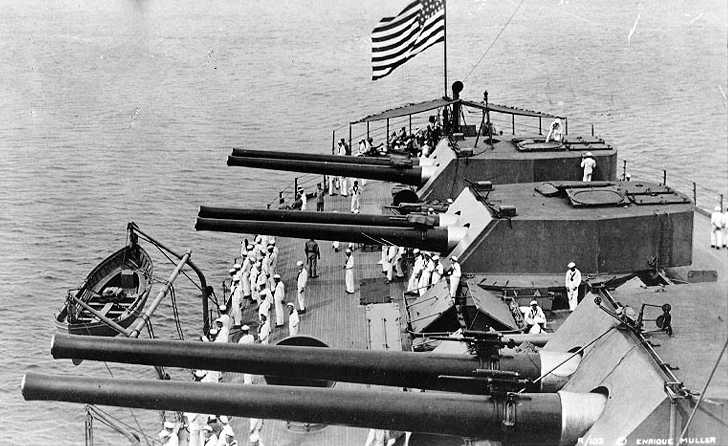|
During target practice in 1916, USS Michigan (B-27) cracked the chase hoops on two of her guns. An investigation of similar guns on USS South Carolina (B-26) showed that copper deposits from the projectile driving bands had narrowed down the bores, which slowed the projectiles and thus greatly increased the barrel pressures (copper choke). Lapping heads for guns 12" (30.5 cm) and larger were issued to all ships for removing these deposits. Later, these were replaced by wire and pisaba brushes. Under the provisions of the Washington Naval Limitation Treaty of 1922, most of the ships armed with these guns were scrapped during the mid-1920s. Many of their guns were then transferred to the US Army where they were employed as coastal artillery. At the end of World War II, some of these guns were sold to Brazil where they may still be in service. A note on sources: Appendix D of "U.S. Battleships: An Illustrated Design History" by Norman Friedman states that the USS Connecticut (B-18) and USS Mississippi (B-23) classes carried 12"/40 (30.5 cm) guns. Other sources disagree and state that they carried 12"/45 (30.5 cm) guns. Through an analysis of several photographs and, ironically, aided by notes in another book by Dr. Friedman, "US Naval Weapons," I have concluded that these ships actually carried the 12"/45 (30.5 cm) gun and that Dr. Friedman in "U.S. Battleships" is in error. In 1908 AP projectiles were fitted with a longer ballistic cap of 7crh which improved their penetration ability at longer ranges. Constructionally, the Mark 5 was essentially a lengthened 12"/40 (30.5 cm) Mark 4. The Mark 6 was very similar except that it had seven hoops vs. six in the Mark 5. It is not clear if any Mark 6 guns were actually used in service. The data that follows is specifically for the 12"/45 (30.5 cm) Mark 5 Mod 9. |

Aft turrets of USS Delaware B-28 about
1913
|
| .
|